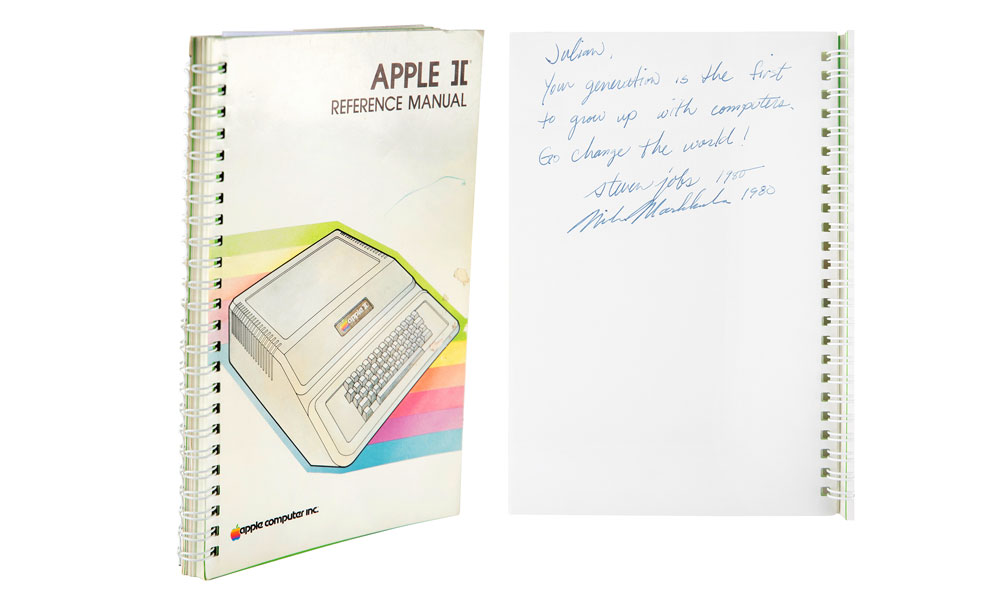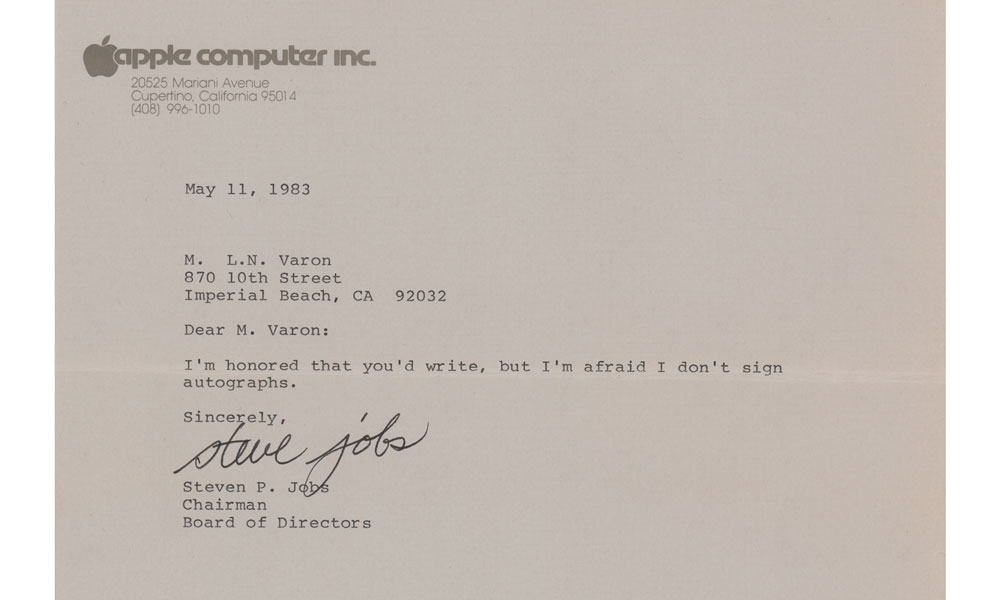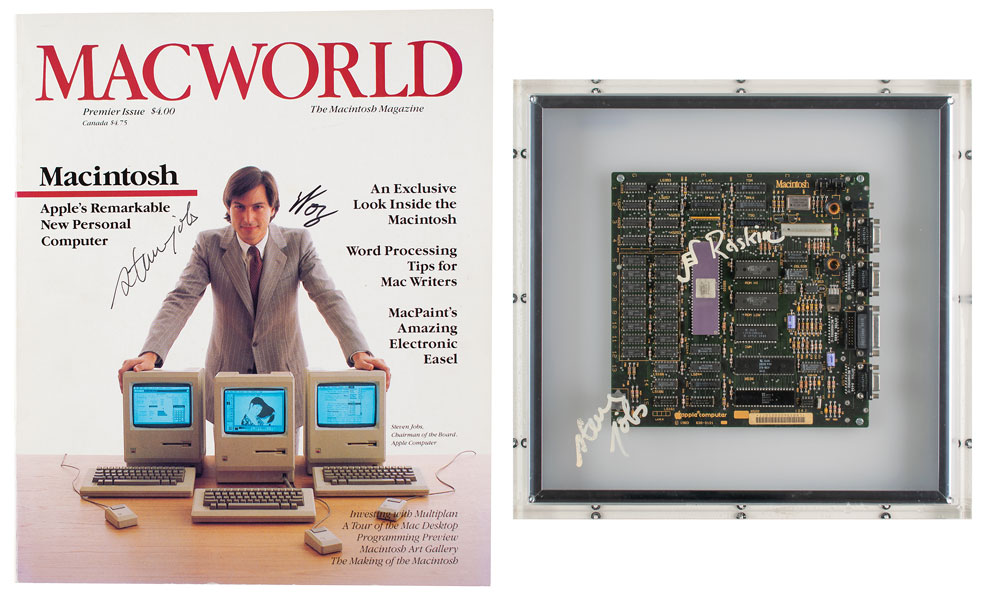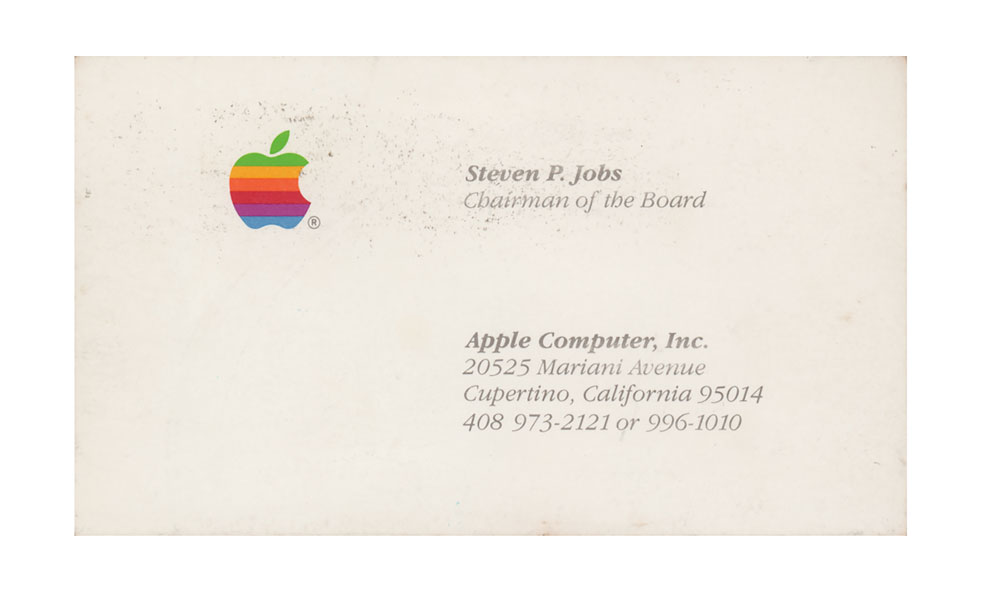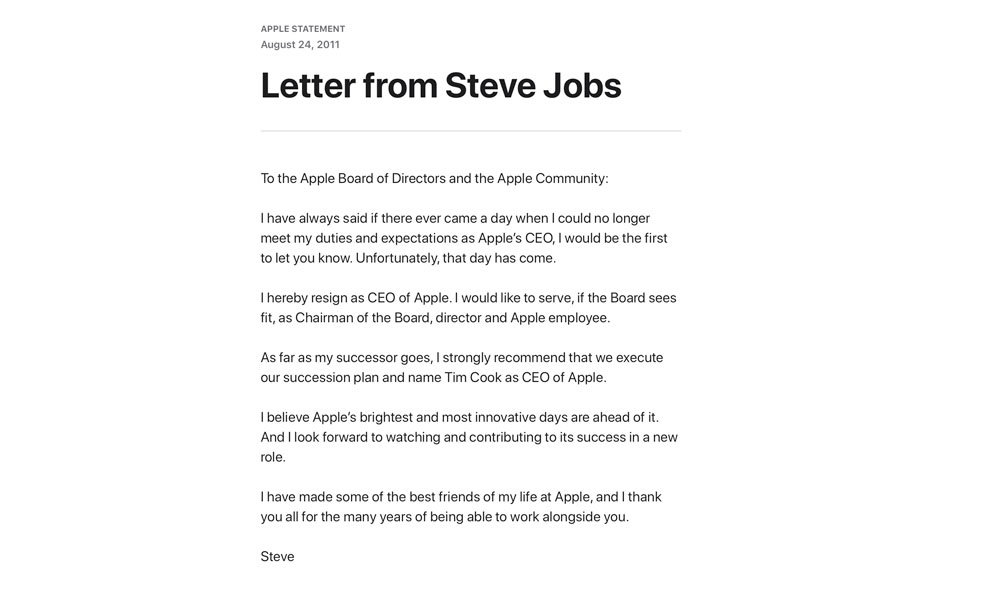Remembering Steve Jobs | Apple II Manual Signed by Steve Goes for $787,484 at Auction
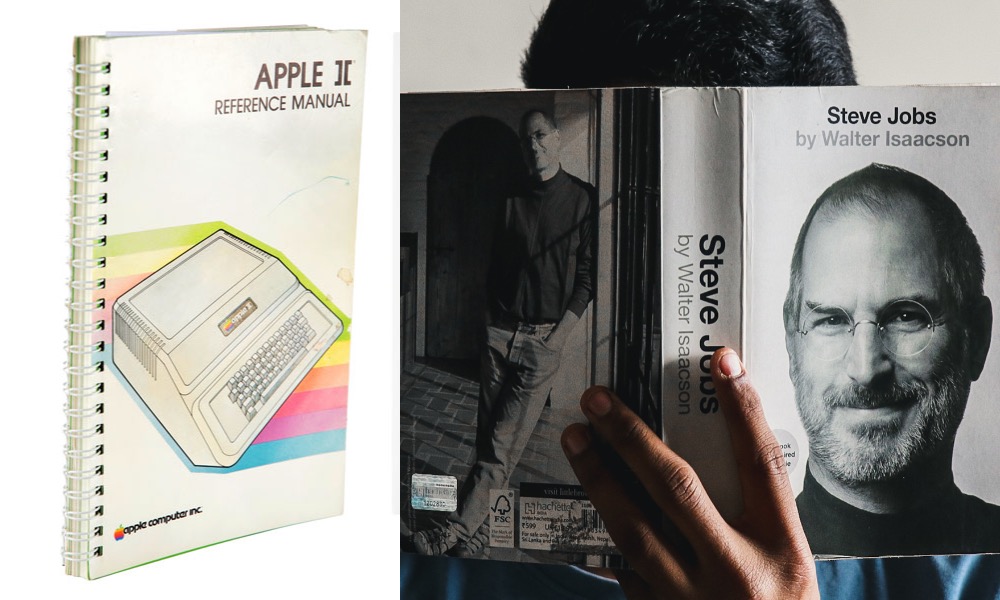 Credit: RR Auction / Md Mahdi
Credit: RR Auction / Md MahdiToggle Dark Mode
Today marks ten years since legendary Apple co-founder Steve Jobs resigned from his post as the company’s Chief Executive Officer, handing over the reins to Tim Cook, so it’s probably more than a mere coincidence that a big auction lot of Jobs’ Apple memorabilia just collectively fetched well over a million dollars.
The biggest-ticket item was an original spiral-bound Apple II reference manual that was signed and inscribed by Steve Jobs, which went for a staggering $787,484, making it one of the most valuable Apple-related collector’s items in history.
Jobs’ inscription in the manual was made out to “Julian,” who was the son of U.K. entrepreneur Mike Brewer. At the time, Brewer had negotiated exclusive distribution rights for Apple’s products in the U.K., but he also went on to later become the first Managing Director of Apple Computer (UK) Ltd.
I was sitting in my bedroom writing games on my Apple II when Dad called me down to meet some guests. To my amazement it was Steve Jobs and Mike Markkula. I had the manual with me and only later understood how rare it was for Jobs to sign anything, let alone to write an inscription like this. He got on well with Dad, so I feel the inscription was made with care.
Julian Brewer
The manual was also signed by Mike Markkula, Apple’s “angel investor” and Chairman of the Board from 1977 to 1981.
Other big-ticket items in the auction included a typed letter from Steve Jobs where he politely declined a request from somebody who was apparently seeking an autograph, saying “I’m honored that you’d write, but I’m afraid I don’t sign autographs” — while ironically signing the letter itself with “his distinctive, lowercase signature.” The letter, which was dated 1983 and signed by Jobs, sold for $479.939.
An autographed NeXTSTEP software manual went for $210,235 while an issue of Macworld magazine signed by Steve Jobs and Steve Wozniak sold for $201,021.
A 128K Macintosh Motherboard that was signed in-person by Jobs and Mac pioneer Jef Raskin also fetched $132,049.
Meanwhile, a leather bomber jacket that was owned and worn by Jobs only garnered $66,466, while Steve Jobs’ business card from his first tenure as Chairman of the Board at Apple fetched $12,905.
Remembering Steve Jobs
It’s interesting to note that as much as we think of Steve Jobs as the only CEO that Apple ever had, Apple’s co-founder didn’t actually take on that mantle until he returned to the company in 1997. In fact, for the first few years after Apple’s founding in 1976, Jobs’ only title was “co-founder” alongside Steve Wozniak.
As the source of the investment capital required to get the fledgling Apple Computer company off the ground, Mike Markkula became the original chairman of the board, but since both Jobs and Wozniak were seen as too young and inexperienced to sit in the Chief Executive Office, Markkula recruited Michael Scott to head up the new company.
Following an abrupt firing of forty employees in early 1981 — a day that became known in Apple folklore as “Black Wednesday” — Markkula took the helm himself, moving Jobs into the official position of Chairman of the Board for the first time, and reassigning Scott to be the vice-chairman.
Jobs would remain Chairman of Apple until he left the company in 1985, after which John Scully came on as CEO and Markkula once again became Chairman. Markkula remained in that role until Jobs’ triumphant return in 1997 as CEO, at which point the Chairman position was eliminated.
Of course, it was Jobs’ tenure from 1997-2011 where he basically reinvented Apple, overseeing the company’s move into everything from making the Mac more mainstream to releasing the iPod, the iPhone, and the iPad.
As Jobs’ health deteriorated through 2011, however, he found himself spending more and more time away from Apple, until he reached the point on August 24, 2011, where he realized that he “could no longer meet [his] duties and expectations as Apple’s CEO.”
It was a sad day for Apple fans, but we had also known for a while that this day was coming. While Jobs handed over the reins of Apple to Tim Cook, he asked Apple’s Board of Directors to resurrect the Chairman of the Board position, so he could remain on in that capacity.
Although the Board eagerly agreed to name Jobs as its new Chairman, that appointment was tragically much more short-lived than anybody had hoped. Jobs continued to actively work for Apple to the day before his death, which came only six weeks later on October 5, 2011.
Still, it’s no exaggeration to say that Steve Jobs’ influence remains felt today. Apple’s current CEO, Tim Cook, has filled his predecessor’s big shoes admirably, and along with the rest of the executive team has taken Apple in new directions that Jobs could have perhaps only dreamed of, but it’s fair to say that the Apple today remains true to the core of Jobs’ vision to change the world.
In fact, in a 2019 interview, Apple co-founder Steve Wozniak, who obviously knew Jobs pretty well, felt that his partner would be glad to see what Apple had become.
Specifically, Woz notes that the main reason Tim Cook originally joined Apple over 20 years ago was “because of the way Steve Jobs thought and worked,” and that he still carries around Steve’s core values with him “everywhere he goes.”
Why is Apple the best company? I remember talking about values in life and religious values with Steve when we were very very young, and why is Apple the one company that doesn’t care about your gender and you know if you’re gay or trans or anything? Why is it the one company that doesn’t pay attention to any of those things? It’s absolutely right from the very top down. I’m glad and I think that’s going to have a big influence on the rest of the world in the end.
Steve Wozniak
So, it’s fair to say that ten years later, the spirit of Steve Jobs very much lives on within Apple, and while the specific ways of accomplishing Steve’s vision may differ from what the former Apple CEO would have done, the company remains true to the same principles of making the world a better place through accessible and inclusive technology.

